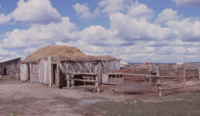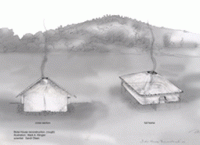An Interview with Sandra L Olsen PhD



Life as a Zooarchaeologist
by Jessica Creane
Sandra Olsen wanted to be an archeologist since the third grade. “I loved dinosaurs, like most kids, so I wanted to be a paleontologist. But then in college I took classes in Zooarchaeology,” the study of animal remains from archaeological sites.
In 1985 she got a chance to do research at a dig site in France where horses were hunted 35,000 years ago.
“That’s when I got interested in horses. I was looking at horse skeletons for clues about the relationship between the animals and humans.”
Sandra went on to continue research into the history of horses and horse domestication in Northern Kazakhstan; “early horse pastoral sites.”
“The initial goal in domesticating horses was probably to obtain food. We found that 90-99% of the midden, or trash, left by the Botai, the people whose settlement we were studying in Kazakhstan, consisted of horse bones. The bones showed signs of butchery, which is no surprise since the marrow and meat are so nutritious. We also know that the Botai, like many cultures, sacrificed horses to the sun god, buried horses with humans so that they could carry on serving them in the afterlife, and that they built a horse corral.”
“Soil samples of the enclosure found nitrates, phosphates, and sodium, indicating the presence of manure and possibly urine. Horses were the only livestock the Botai had, and since there were no domesticated sheep or cattle at the time, it’s easier to know that the corral was used for horses.”
“The Botai’s relationship with horses was not like ours; horses were like cattle, not pets. Their diet was low in fat so they would slaughter the horses in the early winter when the horses’ bodies were putting on fat, so they could stockpile and freeze the meat to last them through the winter.”
“I came to Kazakhstan for the first time just 18 months after the break up of the Soviet Union. We occasionally ran out of food and had to go to the nearest hamlet to buy a ram to slaughter for meat. The bread factory couldn’t even get grain because they couldn’t get gasoline to work the plows. The funny thing is, they went right back to using horses to plow.”
“Our field expeditions usually last from six weeks to two months. We had a 28-hour train ride from the old capital city of Kazakhstan, Almaty, to where I worked near Kokshetau, in the north. We camped in tents and as for the weather, it’s like we used to say where I grew up in Kansas: if you don’t like it, wait five minutes. We’ve seen dust storms, grass fires, lots of lightening, and we even had a tornado come through once.”
For as tough as it can be in the field, Sandra says that it’s definitely “the fun part” of her job.
“Nowadays our field work is more high tech. I handle the bones and pottery and run the operation, with my co-director, Bruce Bradley, but we don’t dig as much as you would think. I take with me a physical engineer who does remote sensing, using magnetic imaging to see below the ground surface. We can map in where all of the houses and pits are without excavating. We even have a generator and a trailer for our equipment and computers. And of course everybody e-mails. We only excavate about one and a half pit houses per field season, but we can answer questions we could never have answered 20-30 years ago using new techniques.”
Sandra is now back home in Pittsburgh analyzing the horse bones she recovered in Kazakhstan to find out how the horses were utilized, and also the age at which they were slaughtered. All part of the life of a Zooarchaeologist.
“And I just performed a CT scan on an Egyptian child mummy in collaboration with the University of Pittsburgh School of Medicine. For an archaeologist, studying an Egyptian mummy fulfils a life-long dream.”
Sandra’s work never stops. Not only is she busy with archaeology, she is co-curator of the exhibit The Horse, currently at the American Museum of Natural History in New York. “And of course I’ll be returning to Kazakhstan for a visit in September… and, well, a little bit of research.”
Learn about equestrian vacations and book horseback riding adventures at EquitrekkingTravel.com




